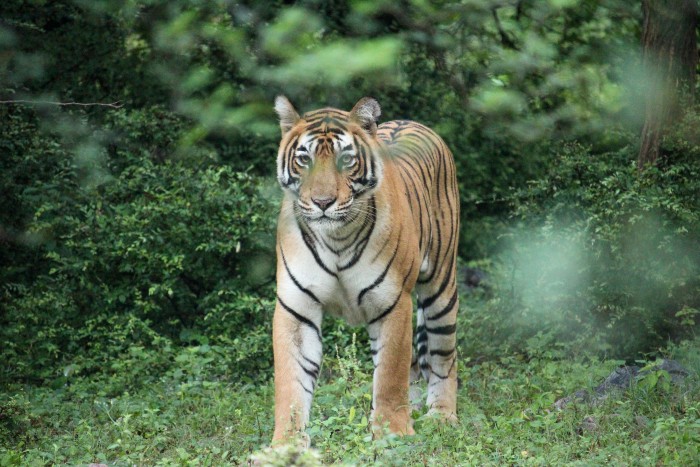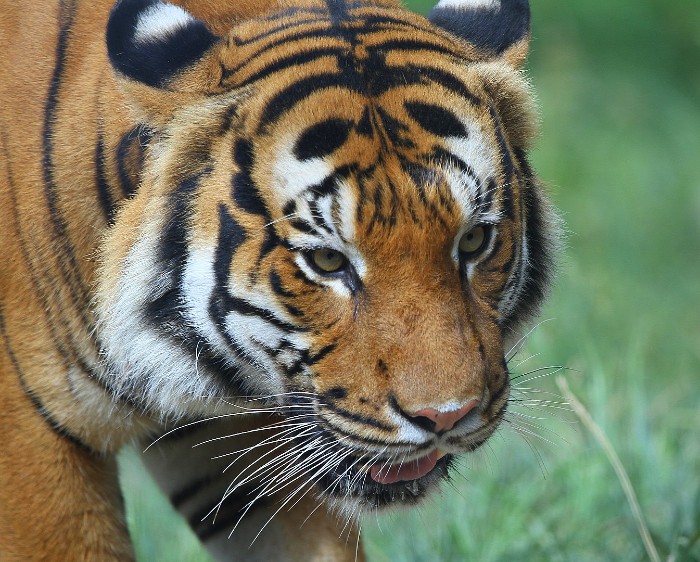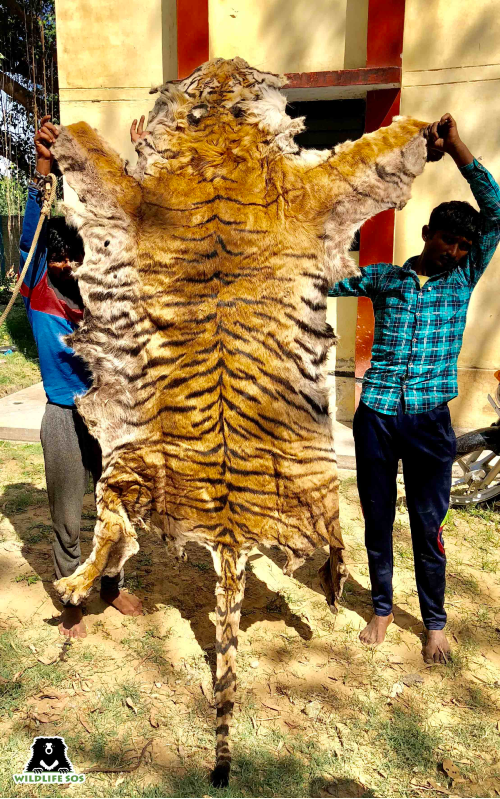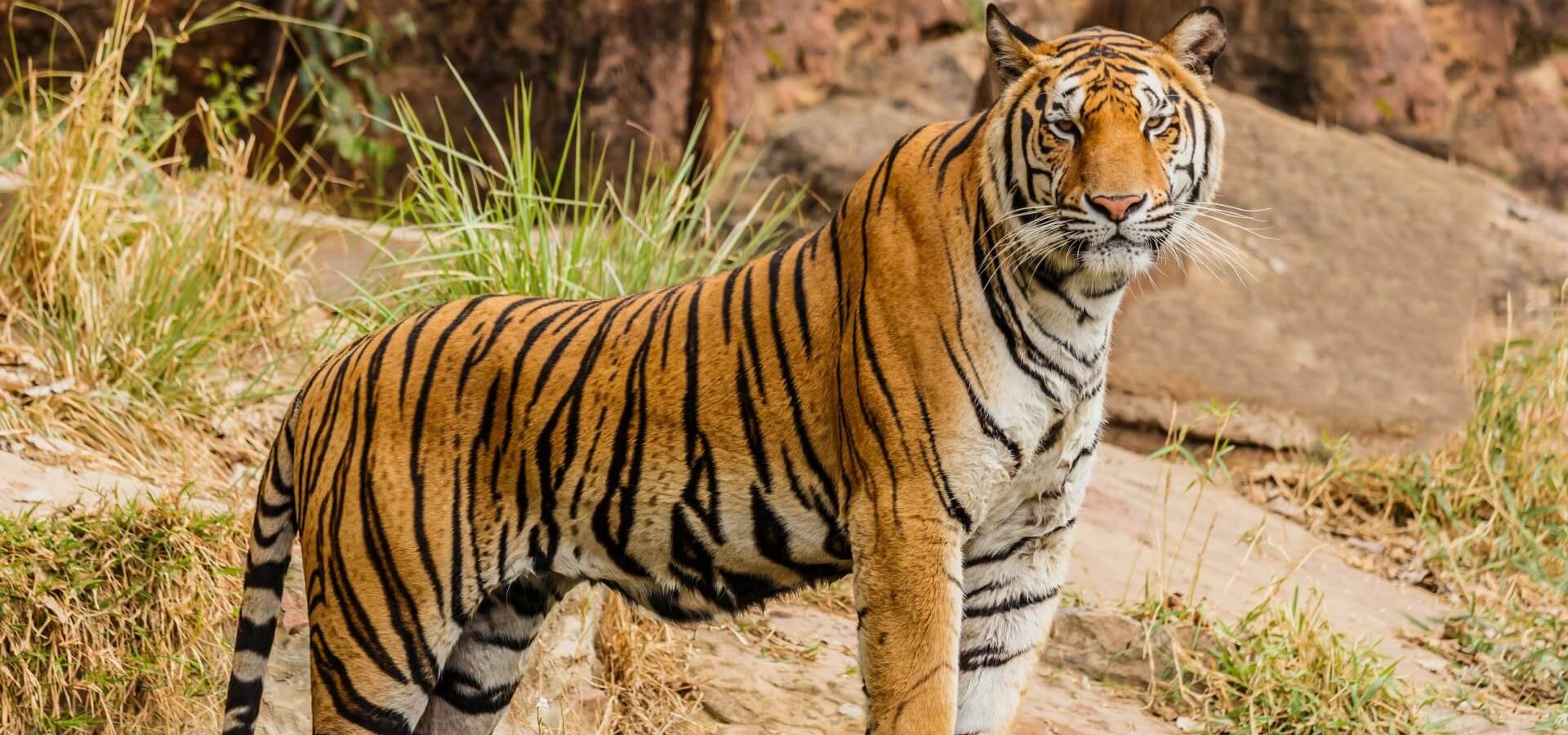They once numbered over 1,00,000 almost a century ago. These animals have inspired the imagination of many, turned hunters into protectors and have become the poster child of wildlife conservation in today’s world. They are also the largest members of their family. These hints can only mean one thing: we are talking about tigers.

The fascination that this particular big cat has ignited in people led to a lot of research studies being conducted on tigers. But there is still a lot that most of us do not know about these felines. From more than 1,00,000 tigers roaming the planet a century ago, their current population in the wild has come down to an unimaginable low of about 4,500. With a magnificent animal such as this, it is only fair we get to know the types of tigers that currently inhabit our planet.
Tigers Currently Found Globally
When we hear the word tiger, the image that comes to mind is that of a regal looking Bengal or Siberian tiger. In addition to these two tigers, there are seven more subspecies of tigers that are known to us, three of which are extinct. The six that currently exist include the Bengal tiger (Panthera tigris tigris), Siberian tiger (P.t. altaica), Sumatran tiger (P.t. sumatrae), Malayan tiger (P.t. jacksoni, or P.t. malayensis), Indochinese tiger (P.t. corbetti) and South China tiger (P.t. amoyensis).
Bengal Tiger – The Bengal tiger is the most well-known subspecies of all the tigers and is found in India, Nepal, Bangladesh and Bhutan. Out of these four countries, the tigers found in India are the most ubiquitous in terms of habitat diversity. Their habitat ranges from the Himalayan foothills to central Indian scrub forests to mangrove swamps in eastern India. A majority of the Bengal tiger population is found in India, with its population estimated to be 2,967. While the number sounds encouraging, it is a grim indication for the global tiger population because it implies that just a little over 1,500 of the remaining five tiger subspecies are left in the wild.

Siberian Tiger – Also known as the Amur tiger, Korean tiger and Manchurian tiger, the Siberian tiger is considered the largest tiger subspecies, with males weighing up to 300 kg! They mostly occupy taiga or boreal (snow) forests in north-eastern China, the eastern part of Siberia and the Russian Far East. They are also thought to be present in the Korean Peninsula and Manchuria. They possess a thick coat of fur to survive the harsh winter temperatures and their pelage is a paler shade of orange compared to their cousins. Their estimated population is about 500, which are low number for the biggest tiger subspecies.
Indochinese Tiger – Spread throughout the majority of south-east Asia, the Indochinese tiger is present in countries such as Thailand, Laos, Vietnam, Myanmar and Cambodia. They are not among the heavier ones; the males can weigh up to 195 kg while females weigh from 100 to 130 kg. Interestingly, the scientific name of the subspecies corbetti is in honour of famous hunter-turned-conservationist Jim Corbett. The number of Indochinese tigers in the wild is known to comprise a mere 250 individuals, with the largest population found in Thailand. These numbers are evidence enough that the Indochinese tigers are and are in dire need of attention and protection.
Malayan Tiger – A lesser-known fact about the Malayan tiger is that the subspecies name P.t. jacksoni is ascribed to the tiger conservationist Peter Jackson. However, given the animal’s geographical range the scientific name was recommended as P.t. malayensis. As a way to honour both, the scientific name was decided to be the former one while it derived its common name Malayan tiger from the latter. In Malay language, the tiger is known as harimau. These tigers are found mainly in the Malay peninsula, as well as in parts of southern Thailand. In recent years, they have become ‘Critically Endangered’ as estimates suggest there are close to just 150 mature adults left who are capable of breeding.

Sumatran Tiger – Out of all the tigers of Sundaland in the Malay Archipelago, which includes the islands of Indonesia, Sumatra, Bali and Java, the Sumatran tiger is the only subspecies left, with Bali and Javan tigers having gone extinct. After the extinction of the Bali tigers, Sumatran tigers are known to be the smallest among all the tigers currently found in the world; based on head-to-body length, males measure between 87 and 100 inches, whereas females stand at 85-91 inches. Sadly, they are the only tiger subspecies left out of the three that used to exist in the Indonesian islands and there are fewer than 400 left today.
South China Tiger – Though bigger than the Sumatran tiger, the South China tiger is the smallest one found in mainland Asia, with males measuring up to 104 inches and weighing between 130 and 175 kg. As their name suggests, this subspecies inhabits southern China in Guangdong, Hunan and Jiangxi provinces. However, recent studies done by researchers and scientists do not give a good sign about their presence and their numbers have declined astonishingly.
Threats to the Big Cats
The tragic reality is that human activities have reduced the tiger population by almost 96% while destroying or degrading nearly 93% of their original habitat. A major reason behind this loss in population was due to hunting activities by colonisers in the respective colonised countries. Tiger hunting carried out historically for trophy or as bounties throughout various countries in Asia has greatly hurt these majestic animals.

In modern times, poaching of wild tigers for their body parts is still one of the greatest threats to their populations. There are almost double the number of captive bred tigers in the USA alone than there are in the wild. Breeding tigers is another reason for poaching tigers, following which they are kept in zoos for tourists where they can pet them. This statement is a travesty of their freedom and should be a wake up call for us.
Moreover, in all the countries where tigers are found, habitats are shrinking due to degradation, deforestation and destruction. The resultant human encroachment is bringing tigers closer to human settlements, thereby increasing the chances of conflict. As a result, the tigers are often persecuted for a problem that human beings created in the first place: fragmenting the natural habitat. No matter how protected tigers are, until these issues are eradicated completely, the maladies are going to keep hurting them.
Wildlife SOS Conserving Tigers
To further tiger conservation efforts in India, Wildlife SOS’ anti-poaching unit ‘Forest Watch’ assists enforcement agencies such as state forest departments and wildlife crime control bureaus, by gathering and relaying valuable intelligence pertaining to wildlife trafficking and crimes. The organisation has assisted enforcement authorities in seizing tiger skins in the past and has been instrumental in nabbing poachers.
Apart from helping to deter wildlife trafficking, Wildlife SOS also actively helps in rescuing and providing treatment to tigers. Earlier this year, Wildlife SOS assisted the forest department in rescuing a Bengal tiger from Etah district of Uttar Pradesh in an 8-hour-long operation. In the month of September this year, a 7-month-old injured female cub was brought to Van Vihar National Park after she fell into a 20-foot-deep well and suffered a rectal prolapse. The Wildlife SOS veterinary team, along with veterinarians from Van Vihar National Park and Government Veterinary Hospital, Bhopal then treated the injured cub.

Currently, almost 35% of tigers in India reportedly live outside protected areas. So the chances of a tiger accidentally falling into a well or being injured remain high. This is where Wildlife SOS’ work in carrying out rescues and providing treatment proves crucial. You can strengthen our rescue and treatment efforts by becoming a monthly donor for Wildlife SOS, and contribute to tiger conservation.





